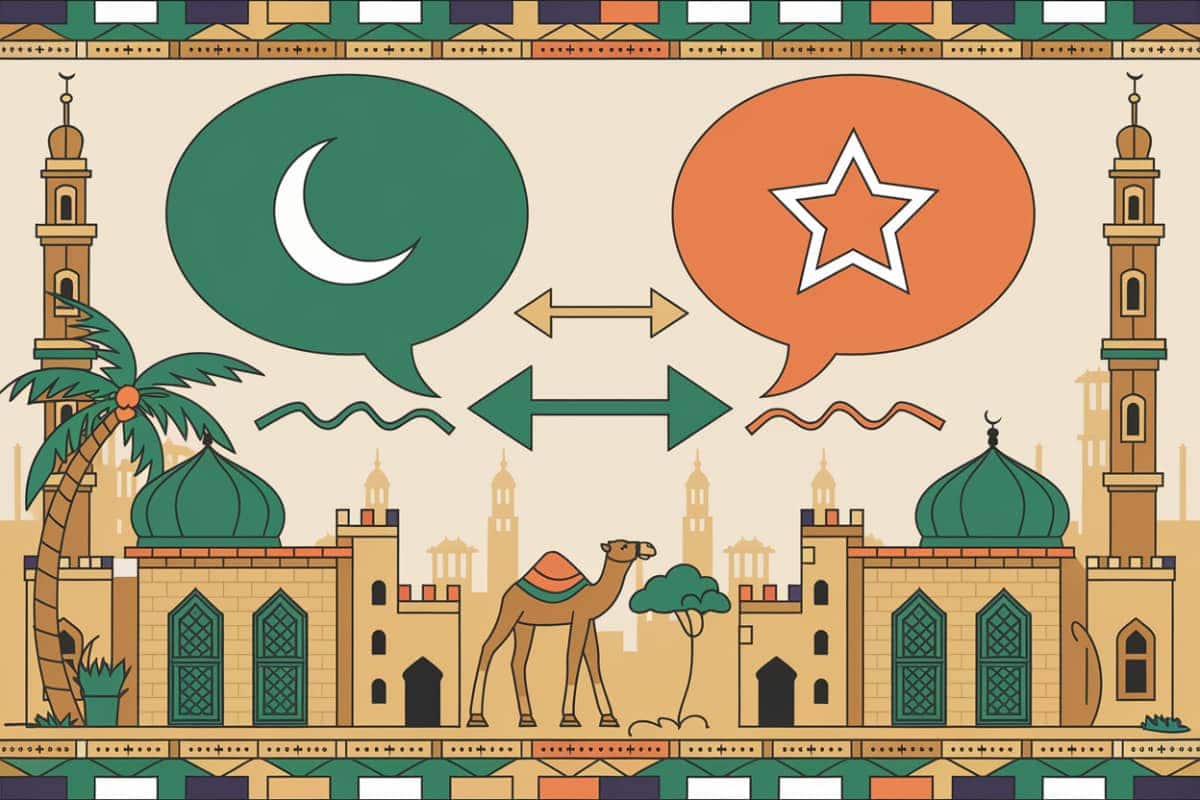Free Arabic Dialect Translator MSA Egyptian Levantine Gulf Maghrebi
Translate between Modern Standard Arabic (MSA) and regional dialects including Egyptian, Levantine, Gulf and Maghrebi Arabic. Our free online tool helps you convert formal Arabic to colloquial dialects and back with accurate results for natural communication.
How Our Free Online Arabic Dialect Translator Works
Our free Arabic dialect translation tool processes your text using advanced language models to convert between Modern Standard Arabic (MSA/فصحى) and major regional dialects including Egyptian, Levantine, Gulf, and Maghrebi Arabic.
While spoken Arabic dialects have unique pronunciation features, our tool focuses on written dialect differences, helping Arabic speakers communicate effectively across regional variations.
💡 Pro Tip: For best results, input complete sentences rather than single words to help the tool understand context and capture authentic regional expressions.
Understanding Arabic Regional Text Differences

Arabic dialects exhibit significant written and spoken variations that developed over centuries in different regions. Each dialect has its own vocabulary, grammar patterns, and colloquial expressions that reflect local language traditions. This online tool helps users convert their text between these distinct regional variants.
Key dialect differences our tool recognizes:
- Regional vocabulary and everyday expressions (e.g., MSA “كيف حالك” vs. Egyptian “إزيك” vs. Levantine “كيفك”)
- Distinct grammatical structures common to each dialect, particularly in verb conjugation and future tense markers
- Colloquial pronunciations reflected in written form
- Characteristic word forms and prefixes/suffixes specific to each dialect
⚠️ Note: While our tool translates text between dialects, it maintains Arabic script and provides accurate colloquial representations without using transliteration.
Regions and Characteristics of Arabic Dialects
Modern Standard Arabic (فصحى)
Official language of formal communication, media, and literature.
Key features: Full grammatical case endings, formal vocabulary, standardized grammar rules.
Common phrases: “من فضلك” (please), “شكراً جزيلاً” (thank you very much), “مع السلامة” (goodbye).
Egyptian Arabic (مصري)
Spoken in: Egypt
Key features: Substitution of ث with ت or س, distinctive future prefix حـ, characteristic negation pattern using ما…ش.
Distinctive vocabulary: “عايز” (want), “دلوقتي” (now), “إزيك” (how are you).
Levantine Arabic (شامي)
Spoken in: Syria, Lebanon, Palestine, Jordan
Key features: Use of ب prefix for present tense, distinctive future marker رح, frequent use of بدي for “want”.
Notable phrases: “يسلمو” (thank you), “شو” (what), “هلق” (now).
Gulf Arabic (خليجي)
Spoken in: Saudi Arabia, UAE, Kuwait, Qatar, Bahrain, Oman
Key features: Preservation of ث and ذ sounds, characteristic چ sound in some regions, unique plural patterns.
Common expressions: “يعطيك العافية” (thank you), “شحالك” (how are you), “مشكور” (thanks).
Maghrebi Arabic (مغربي)
Spoken in: Morocco, Algeria, Tunisia, Libya
Key features: Strong Berber and French influence, distinctive pronunciation patterns, unique vocabulary.
Characteristic phrases: “باراكا” (enough), “بزاف” (very/many), “لاباس” (fine/okay).
Comparison Example:
- Modern Standard Arabic: “أريد أن أذهب إلى السوق”
- Egyptian Arabic: “عايز أروح السوق”
- Levantine Arabic: “بدي روح عالسوق”
- Gulf Arabic: “أبي أروح السوق”
- Maghrebi Arabic: “نبغي نمشي للسوق”
Regional Usage Tips:
- Modern Standard Arabic: Essential for formal writing, news media, and official communication
- Egyptian Arabic: Widely understood due to Egypt’s media influence, common in entertainment
- Levantine Arabic: Popular in music and television series, known for its softer pronunciation
- Gulf Arabic: Increasingly prominent in social media and modern literature
- Maghrebi Arabic: Strong regional variations, important for North African business and culture
